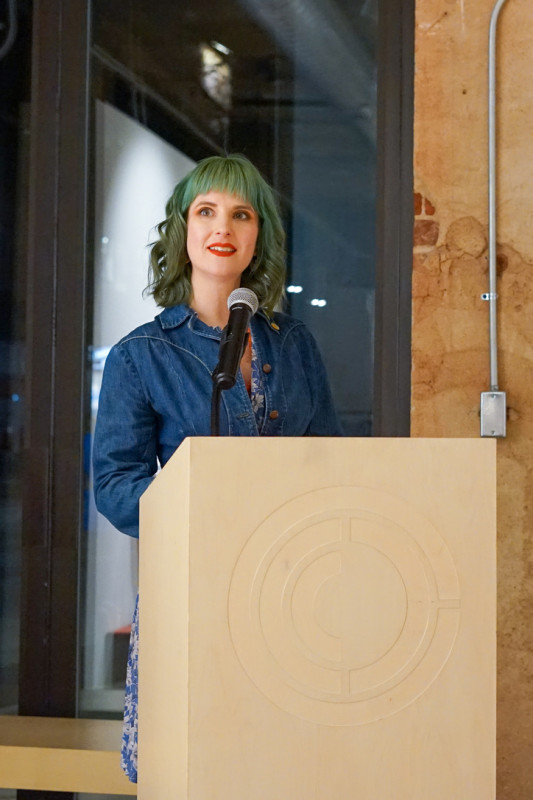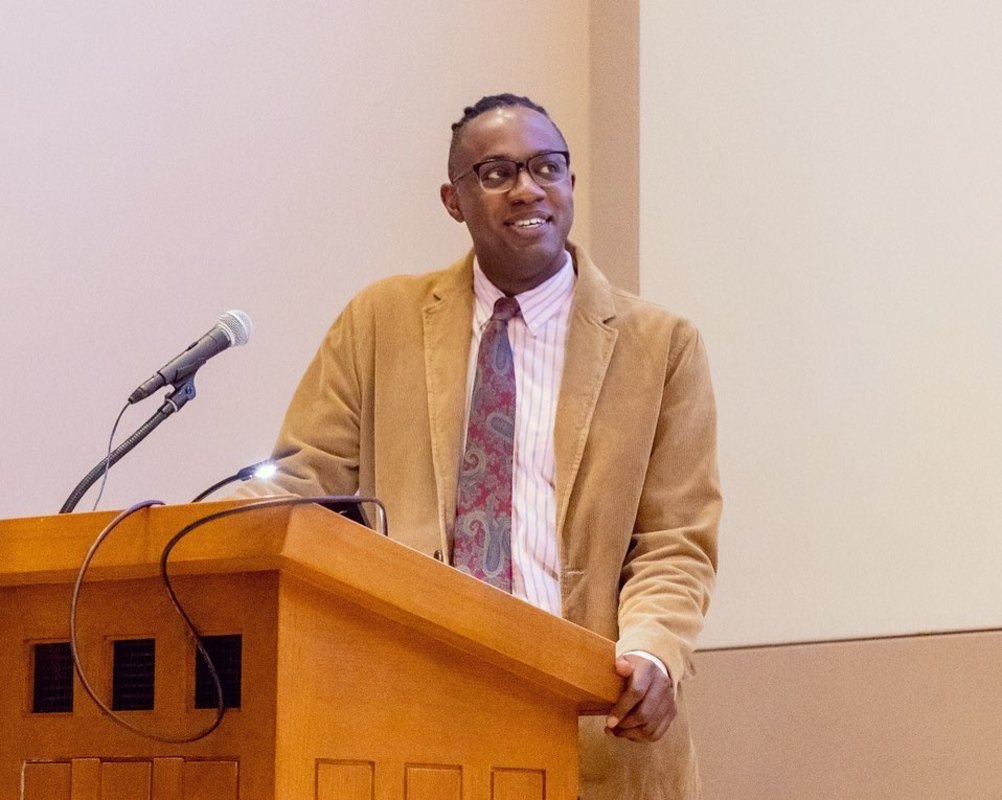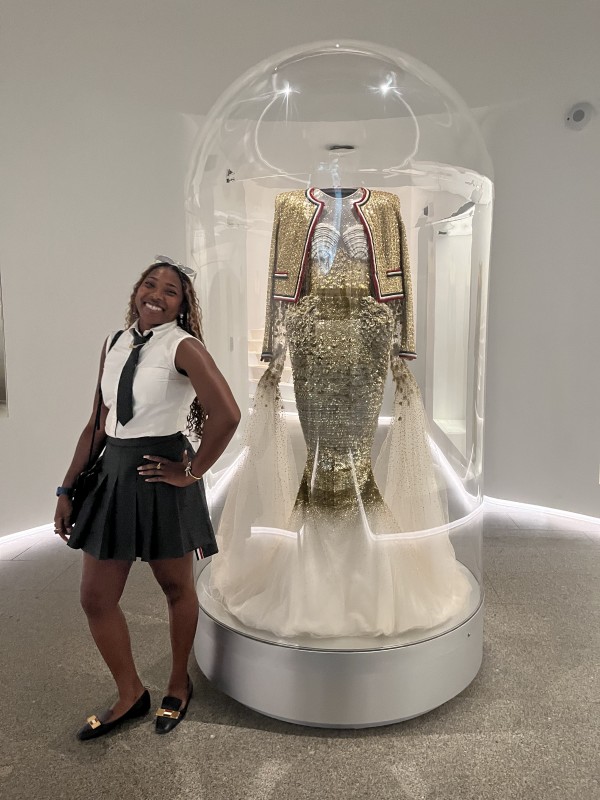How Do You Become a Fashion Historian? – Latest Fashion Trends & Style Tips June 03, 2025 at 06:00PM
📰 How Do You Become a Fashion Historian?
✨ Fashion Insights & Trends:
In many ways, fashion historians are unsung heroes of the industry.
After all, "fashion history is incredibly telling about human history in general, and fashion historians get to preserve, interpret and share that," Levi's historian Tracey Panek tells Fashionista. They contextualize dated artifacts whose stories would otherwise be lost, assist curators and researchers on our favorite fashion exhibits and publicize all this knowledge so it'll be remembered for generations to come.
That's quite the responsibility. And yet, fashion historians remain hidden figures. Some exceptions have made names for themselves through press and social media, like fashion historian and costume designer Shelby Ivey Christie, fashion archivist Julie Ann Claus and Chief Curator at The Museum at FIT, Valerie Steele. Still, most outsiders probably can't properly articulate their job specifics.
What do fashion historians do?

Photo: Courtesy of Shelby Ivey Christie
According to Dr. Jonathan Square, a fashion historian's day-to-day is dependent on the individual. In his case, as a full-time, tenured professor at Parsons, he spends a lot of his time teaching. The rest of his calendar is punctuated by meetings, writing, research and curatorial practice and consulting work. Design historian Sonya Abrego, too, occupies most of her time teaching, and with her publishing work as the deputy editor of Dress, the journal of the Costume Society of America.
Some historians work in corporate settings, like Panek. She acts as director of the Levi's archives, a massive collection of historical garments and documents that date as far back as 1873. "Most of the work that I do is with [internal] designers," she says. "If there's something they want to look at, then they'll come in person and look at [the archives] with me and I'll give them some background."
Meanwhile, Tianni Graham, Thom Browne's principal archivist, juggles multiple projects, including sample management, loans, museum exhibition consulting and collaborations with the in-house design and merchandising team. "I carry out every step of the process from signing the loan agreements and negotiating the details of that, pulling the pieces, packing them, arranging the logistics and sharing internally the information about the exhibitions," Graham explains.
Becoming a Fashion Historian

Photo: Courtesy of Sonya Abrego
There's no one way to become a fashion historian. What you major in in college hardly matters, and given that there are few corporate historian positions, there's not a clearly defined career roadmap that aspiring historians can follow. As Abrego states, "There's no hard and fast rule around it."
Resultantly, most fashion historians create their own path: Christie developed an interest in history when she took an "Intro to African American" course at North Carolina Agricultural and Technical State University (NCA&T). "I had this deep passion for [...] wanting to bring forward the cultural elements of fashion and storytelling," she reflects. But rather than jump straight into corporate history, she got her start in the editorial world. Her first job was as a digital media and marketing planner at Vogue, and later she joined L'Oréal as a Product Marketing Manager.
It wasn't until 2020 that she gave herself the title of fashion historian. "Shiona Turini actually helped me assign myself a title during the pandemic," she recalls. "You can partner with people when they're trying to do costuming that requires historical accuracy, and she had been my mentor in that regard. [...] I created my title, costume and fashion historian, because she said that is the title that [a colleague] had, and did similar work that I do."
Related: How Shelby Ivey Christie Became a Multi-Hyphenate Fashion and Publishing Powerhouse
Abrego always had an interest in vintage clothes, but had no idea fashion history was a viable profession. (She studied science as an undergraduate.) Her lightbulb moment came when she returned to school for her graduate degree and found a brochure promoting New York's Bard Graduate Center. She applied and got accepted into the institution's doctoral program in Decorative Arts Design and Material Culture and started closely studying fashion history. Post-grad, she began teaching fashion history at various colleges, including Pratt Institute, NYU and, currently, Parsons and FIT.
"History is a practice for me," she explains. "Those people who are doing the work and doing the investigation and writing history, putting the work out there, are historians regardless of background or title. But, obviously, that's got to be informed [...] by what you've read and studied.”
For the longest time, Dr. Square would've disagreed with that sentiment. His was a more traditional career trajectory: He studied history in college and got a Ph.D in the subject. Job-wise, he interned at Fashionista (!), was a fellow at the Costume Institute at the Metropolitan Museum of Art and has taught at Harvard University, NYU and the University of Pennsylvania. Thus, he "used to be a snob about [having historian credentials,]" he laughs. But now, he's changed his tune: "I call myself a historian because it's the field that I've been trained in for years, but the term is actually quite loose. If you're someone who studies fashion critically from a historical lens, then I think you can call yourself a fashion historian."
Panek took a similarly conventional approach. She studied history for undergrad, immediately got a job in the industry, got a graduate degree in history and spent nearly 20 years working in corporate history. (She worked as a Corporate Archivist at AirTouch Communications, now Verizon, and AAA Northern California for five and 15 years, respectively.) She joined Levi's in 2014.
Of course, while fashion history boasts numerous entry points, there are common skill sets needed to succeed. Panek notes context analysis and understanding primary documents as non-negotiable abilities. Graham echoes this, adding reading comprehension, analytical reasoning, critical thinking and problem solving to the list.
"Sometimes, all the information isn't given to you, so you need to use context clues," Graham explains. "For example, if you're going through a photography collection, sometimes there's not a lot of contextual information given. So you need to be able to analyze the documents that are provided in conjunction with the images that you're seeing and [...] look at different colors, silhouettes, hemlines, etc."
Carving a Niche

Photo: Courtesy of Dr. Jonathan Square
Christie was interested in exploring fashion's intersection with Blackness long before she formally became a historian. From her experience in marketing and publishing, she saw firsthand how fashion failed to platform Black storytelling. So once she stepped away from the luxury fashion business, she poured her energy into amplifying uncensored Black fashion history on her social media platforms.
"I think wearing the hat of historian or costume designer or fashion archivist is already really important, especially as it relates to Blackness or non-white culture, because you're literally ensuring that a legacy stays alive," she says. "Documentation is, like they say in court, 'It's not about what actually happened. It's about what you can prove happened.'"
Similarly, Graham launched her social media page Archive Alive that documents Black fashion's nonmonolithic nature. "I wanted to find a way to uplift and inspire through the imagery of Black joy and Black creativity," she says. She'll regularly post magazine covers, news clippings, editorials and advertisements from as far back as the '60s, all championing Black people in fashion.
Dr. Square studied Afro-diasporic history prior to stepping into the fashion space, so naturally, he developed an interest in Black fashion, too. He created his platform, "Fashioning the Self in Slavery and Freedom," as an accessible way to understand the intersections between slavery and fashion without academic jargon.
Focusing on Black fashion doesn't come without its challenges. While there's rich scholarship on the subject, it's largely untapped and can be difficult to find. Dr. Square's research is informed by artworks of people of African descent, slave testimonials, newspapers and journalistic accounts, while Graham has practically made the library her second home.
"I'm the library's biggest mascot," she jokes. "They'll have audio and visual recordings where you might be able to access interviews that were done from some organization whose archive they acquired."
Collaboration Opportunities

Photo: Courtesy of Tianni Graham
Fashion history is anything but a solitary profession, as most job opportunities are majorly collaborative. Take, for example, Panek's role in Levi's recent campaign with Beyoncé. She pulled from the archives pieces from Beyoncé's Destiny's Child days that the Levi's design and marketing teams were able to reimagine and reproduce for the collaboration. It perfectly illustrates how essential fashion historians are to helping push the industry forward, per Panek.
Dr. Square argues that the "capital F fashion" industry — designers, publicists and press — could cross-pollinate even more with fashion scholars. How? For one, he points to establishing a systemized version of peer review.
"Designers, of course, get opinions from buyers and other designers, or they might reach out to friends or consultants, but often there's really no system of peer review," he explains. "The fashion industry, I think, would benefit from a little more self-reflection." He also believes designers could be held more accountable for citing references during their creative process.
Abrego calls out marketers missing opportunities by not consulting with fashion scholars to create better storytelling. Historians can bring context that may result in stronger consumer engagement, she suggests.
From an in-house perspective, Graham regularly works with other teams, but finds her role, specifically, to be misunderstood among colleagues. "Especially on a corporate level, you always have to heavily advocate for yourself," she shares. "I have pitch decks out the ass. [...] I think there can be more communication with the archivist directly, and not only to request something, but to actually gain insight. As a corporate archivist, a lot of times people will just ask me for something, but not ask me what I think about it."
Preserving History in a Digital Age
The ongoing misinformation crisis has never been so prevalent, thanks to non-existent social media guidelines, artificial intelligence and internet brain rot. It's why fashion historians are extra cautious of citing their sources when publicly sharing their work: Christie won't post anything without linking her sources or posting screenshots of her research materials and Graham also lists all her scholarship.
Dr. Square adds an extra layer: He'll encourage viewers to be skeptical of anything they consume, including his own posts. "Do your own research [...] before you just accept it to be true," he emphasizes.
There is some good to come of historians living in an advanced technological age: It's never been easier to digitize mass research: Historical documents are now keyword searchable; plus, thanks to AI, scholars are discovering new images, artwork and texts.
Levi's has fully developed a digital archive of over 200,000 objects and is in the early stages of integrating AI tools into its software via photo recognition capabilities and AI-powered meta tags. "AI is going to be great, not to replace us, but to help make us more efficient," Panek says.
AI and other burgeoning tech may not fully disrupt the fashion history space tomorrow, but just like in every other industry, it's best to be prepared.
"Remain open-minded," Graham advises aspiring historians. "The least you can do, especially as someone entering the field, is to come in on a clean slate."
📌 Love fashion? Follow us for daily updates on our fashion blog! 🌟
🔹 #FashionTrends #StyleTips #OOTD #How Do You Become a Fashion Historian?
Comments
Post a Comment